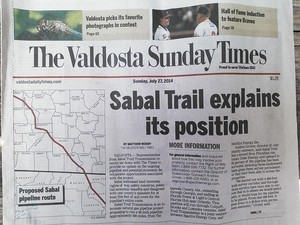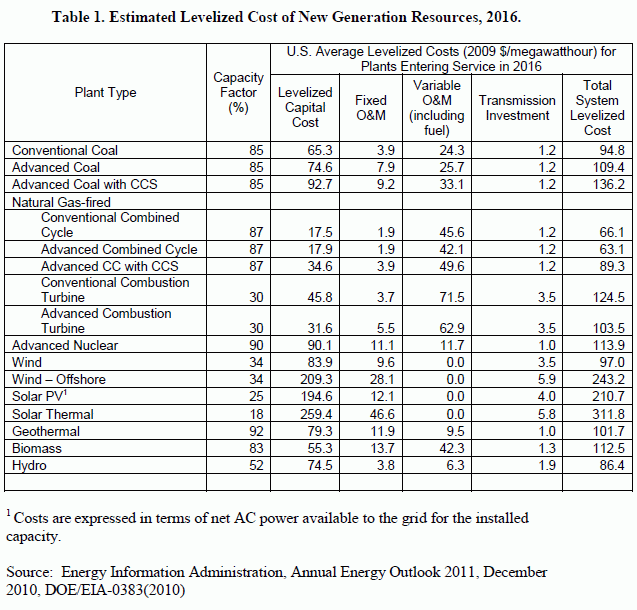 The VDT’s page-long coverage wasn’t just fluff.
Spectra’s Andrea Grover admitted they need complete survey data,
and Sabal Trail admitted they have no Georgia customers, which means
they have no Georgia eminent domain, so every landowner who refuses is
indeed putting a crimp into Spectra’s fracked methane pipeline.
Plus Grover admitted trees don’t grow back fast, so her promise
“It’s restored to what it was before” is pretty hollow.
She admitted she knows the Department of Energy’s Office of Fossil Fuels
can approve LNG export, but she didn’t admit that it has already done
so for three companies right there Spectra’s Sabal Trail pipeline leads
on Florida’s Atlantic coast.
She still can’t seem to remember Spectra’s long list of safety violations.
And she’d already forgotten exactly when her posse of seven
rode into Leesburg, GA seeking an eminent domain court order,
and rode away without it.
The VDT’s page-long coverage wasn’t just fluff.
Spectra’s Andrea Grover admitted they need complete survey data,
and Sabal Trail admitted they have no Georgia customers, which means
they have no Georgia eminent domain, so every landowner who refuses is
indeed putting a crimp into Spectra’s fracked methane pipeline.
Plus Grover admitted trees don’t grow back fast, so her promise
“It’s restored to what it was before” is pretty hollow.
She admitted she knows the Department of Energy’s Office of Fossil Fuels
can approve LNG export, but she didn’t admit that it has already done
so for three companies right there Spectra’s Sabal Trail pipeline leads
on Florida’s Atlantic coast.
She still can’t seem to remember Spectra’s long list of safety violations.
And she’d already forgotten exactly when her posse of seven
rode into Leesburg, GA seeking an eminent domain court order,
and rode away without it.
Not a word, though, about Lowndes County Chairman Bill Slaughter’s fourteen points of Continue reading





